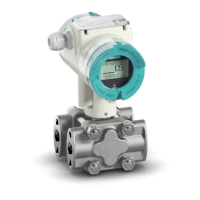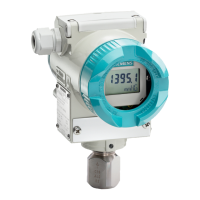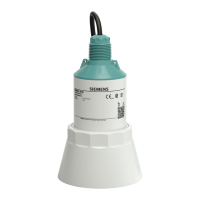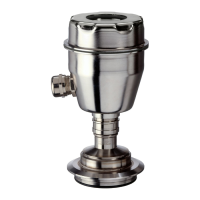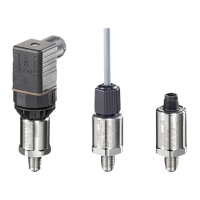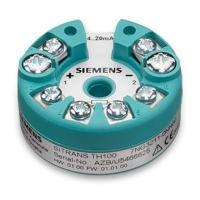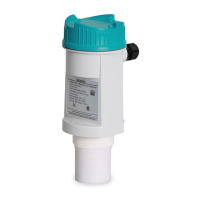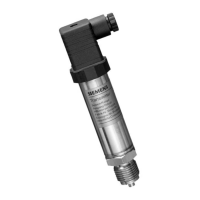
Do you have a question about the Siemens SITRANS P series and is the answer not in the manual?
| Communication | HART, PROFIBUS PA, FOUNDATION Fieldbus |
|---|---|
| Housing Material | Stainless steel, aluminum |
| Measurement Range | Varies by model (e.g., 0-10 bar, 0-100 bar, etc.) |
| Output | 4-20 mA, HART, PROFIBUS PA, Foundation Fieldbus |
| Operating Temperature | -40°C to +85°C (-40°F to +185°F) |
| Ingress Protection | IP66, IP67 |
| Measured Medium | Liquids, gases |
| Process Temperature | -40°C to +125°C (-40°F to +257°F) |
| Ambient Temperature | -40°C to +85°C (-40°F to +185°F) |
| Approvals | ATEX, IECEx, CSA |
| Process Connection | 1/2" NPT |
Explains the grading and usage of safety warning symbols within the manual.
Defines the required qualifications for operating the device safely.
Guidelines for the correct and safe usage of Siemens products.
Outlines the scope and objective of the operating instructions manual.
Establishes correlation between documentation edition and firmware.
Details the transmitter's measurement capabilities and applications.
Procedures to verify delivery contents and check for damage.
Explains the information presented on the device's nameplate.
Guidelines for safe transport and storage of the device.
Information regarding warranty conditions and limitations.
Essential conditions and safety measures before operating the device.
Lists relevant laws, directives, and conformity with European standards.
Warns against unauthorized modifications and their consequences.
Specific qualifications for personnel working in hazardous environments.
Covers electrostatic charge, intrinsic safety, and explosion protection risks.
Fundamental safety guidelines for installing the device.
Safety regarding material compatibility and exceeding operating limits.
Warnings regarding cable glands, conduits, and connections in hazardous areas.
Safety for flameproof enclosures and correct mounting in Zone 0.
Ensuring continued explosion protection by proper closure.
Precautions for hot surfaces and protection against external loads.
Criteria for selecting a suitable installation location.
Detailed steps for correctly mounting the device.
Maintaining enclosure protection and safe disassembly procedures.
General guidance for installation, excluding level measurement setups.
Guidance on configuring the transmitter for gases, vapors, and liquids.
Notes on preventing measuring cell damage and fastening methods.
Requirements for installing the transmitter for level measurement.
Step-by-step guide for installing the device for level applications.
Connecting the negative pressure line for open containers.
Connecting the negative pressure line for closed containers.
Safety instructions for cables, cable glands, and power supply.
Warnings regarding hazardous contact voltage and unsafe extra-low voltage.
Safety regarding equipotential bonding, cable ends, and shielded cables.
Warnings about connecting in energized state and selecting protection types.
Precautions for high ambient temperatures and correct grounding.
Information on electromagnetic compatibility and improving interference immunity.
Steps to open the device and perform electrical connections.
Steps to properly close the device after electrical connections.
Crucial safety measures for commissioning, including toxic media and hot surfaces.
Overview and preparation for the commissioning process.
Usual and special arrangements for commissioning with gases.
Step-by-step guide for commissioning the transmitter for gases.
Initial requirements for commissioning with steam or liquid.
Step-by-step guide for commissioning with steam or liquid.
Safety notes for commissioning differential pressure and flow rate measurements.
Usual and special arrangements for commissioning in gaseous environments.
Configurations for transmitters above and below the differential pressure transducer.
Conditions and procedure for commissioning with liquids.
Usual and special arrangements for commissioning with liquids.
Initial condition for commissioning with vapor.
Step-by-step guide for commissioning the transmitter for vapor.
Safety instructions for repairs, spare parts, and hazardous areas.
Procedures for handling errors and safety with hot/toxic media.
Safety for connections after maintenance and computer use in hazardous areas.
Defining maintenance intervals and releasing key locks.
Procedures for checking gaskets and interpreting fault displays.
Guidelines for cleaning the device, avoiding dust and moisture.
Cleaning the enclosure and preventing electrostatic charges.
Servicing remote seals and procedures for returning the device.
Information on proper disposal of the device.
Technical details for gauge pressure inputs with different diaphragm types.
Technical details for absolute pressure inputs.
Technical specifications for DS III input with PMC connection.
Technical details for absolute pressure inputs from differential pressure series.
Technical details for differential pressure and flow rate inputs.
Technical details for level input measurements.
Details on the output signal for HART and Fieldbus.
Environmental and installation conditions for gauge/absolute pressure.
Operating conditions for flush-mounted diaphragm pressure inputs.
Operating conditions for DS III with PMC connection.
Operating conditions for differential pressure and flow rate.
Operating conditions for level measurements.
Material and construction details for gauge and absolute pressure types.
Material and construction details for flush-mounted diaphragm types.
Material and construction details for DS III with PMC connection.
Material and construction details for DP and flow rate types.
Material and construction details for level measurement.
Details on available electrical connection types and screwed joints.
Information on the device display, keypad, and auxiliary power.
Lists relevant certifications and approvals for the device.
Markings and classifications for dust, Zone 2, and FM explosion protection.
Information on obtaining device certificates.
Contact information and resources for technical assistance.
Temperature limits and entity parameters for hazardous area approvals.
Markings and classifications for dust, Zone 2, and FM explosion protection.
Resources for finding local representatives and additional documentation.
Lists trademarks and the disclaimer of liability for the publication.
